


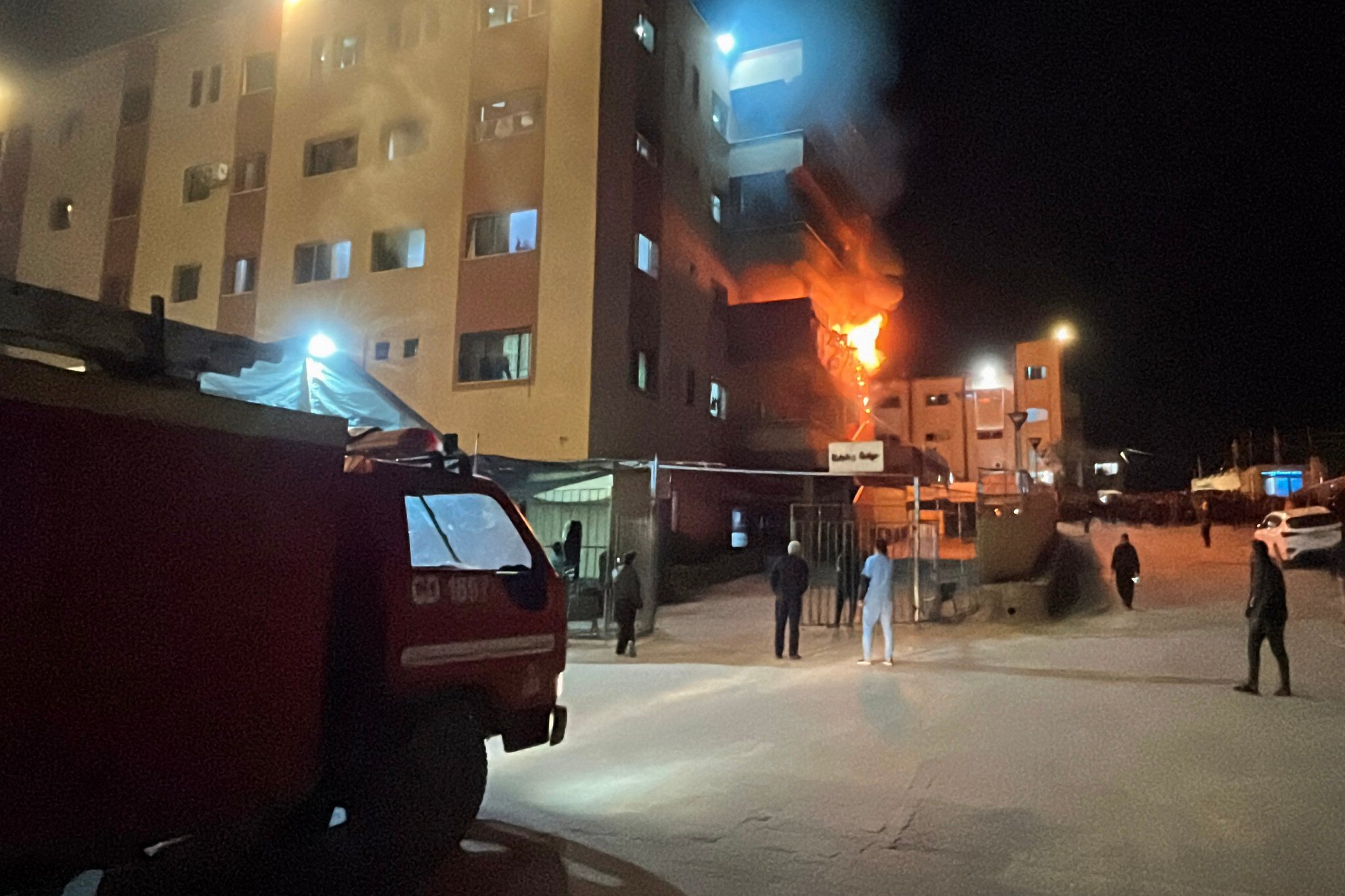
The Times of Israel is liveblogging Tuesday’s events as they unfold.
IDF says it hit Khan Younis hospital compound used by Hamas operatives
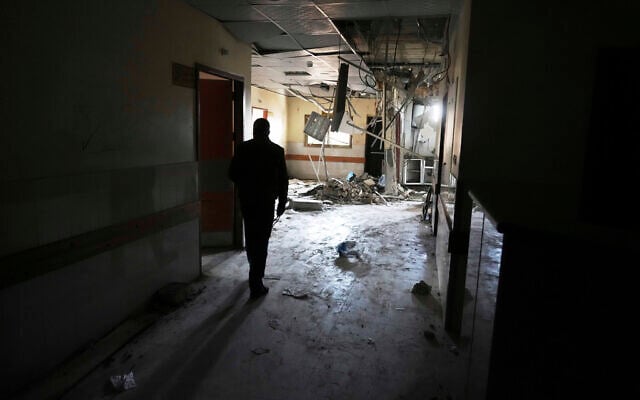
The IDF says that its forces carried out a “targeted attack” on “key” Hamas operatives who were operating a command center in the Nasser Hospital compound in Khan Younis.
Palestinian media reported multiple casualties in the strike.
Among those reported killed is Palestinian journalist Hassan Eslaiah.
On October 7, Eslaiah, who was freelancing for the Associated Press, took photos of a burning tank on the Gaza border which had been attacked by Hamas operatives. He also invaded Israel with the terrorists and photographed them entering Kibbutz Nir Oz, where dozens of civilians were massacred.
Last month, the IDF announced that it had targeted Eslaiah in an airstrike, but he managed to survive.
תקיפת צה"ל בח'אן יונס: על פי דיוחים בעזה, בין ההרוגים ה"עיתונאי" העזתי חסן אצליח שצילם את עצמו ב- 7 באוקטובר | תיעוד @ItayBlumental https://t.co/RCejA4XaEn pic.twitter.com/dEYXaTNm3d
— כאן חדשות (@kann_news) May 13, 2025
The army asserts in a statement that the Nasser compound continues to be used by Hamas operatives to plan attacks against Israel.
The IDF says that the site was specifically being used by a man who replaced Ismail Barhoum, a former senior Hamas official who the army said it killed in another strike on the same site in March.
Barhoum was a member of Hamas’s political bureau, chief of the terror group’s finances and the successor to Issam Da’alis, the de-facto prime minister of Gaza, who was also killed in March.
The IDF does not identify Barhoum’s successor in the overnight statement, nor does it specify whether he was the target of the strike or if he was killed.
“Senior Hamas terrorist organization officials continue to use the hospital for terror purposes, cynically and cruelly exploiting the civilian population in and around the hospital,” the IDF statement says.
PM said to tell MKs: Israel destroying homes in Gaza, so Palestinians have nowhere else to go but outside the Strip

Prime Minister Benjamin Netanyahu told lawmakers during closed-door testimony before the the Knesset’s Foreign Affairs and Defense Committee yesterday that Israel is “destroying more and more houses [in Gaza and Palestinians accordingly] have nowhere to return,” according to quotes from the session leaked to the media.
“The only obvious result will be Gazans choosing to emigrate outside of the Strip,” Netanyahu continued. “But our main problem is finding countries to take them in.”
Netanyahu told the lawmakers that he has discussed Donald Trump’s plan for the US to take over Gaza with the president in recent days but acknowledged that there have been difficulties in implementing it.
While Trump initially called on Egypt and Jordan to take in Palestinians, both countries quickly pushed back against the idea, insisting that Palestinians should be allowed to remain on their land.
Israel has also refrained from publicly assuring Gazans that those who leave will be allowed to return, further reducing the incentive for countries to take in Gazans, given the perception that they’d be interfering in a decades-old conflict over land.
Dozens who have left Gaza a pilot program for work abroad have reportedly been required to sign documents acknowledging that there is no timeline for when they can come back due to the security situation. Children who have been evacuated for medical treatment abroad have also been prevented from reuniting with their families back in Gaza after the completion of their hospital stay.
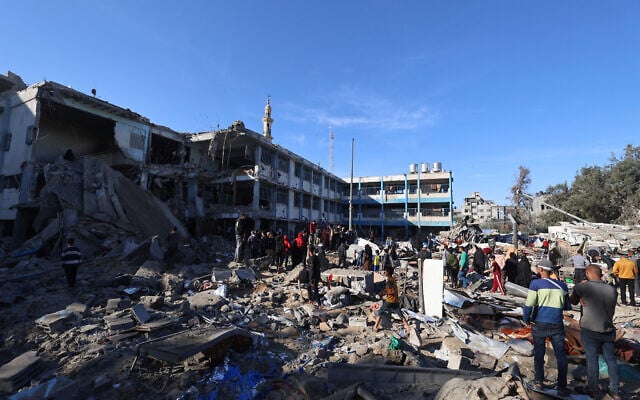
During Sunday’s Knesset committee meeting, Netanyahu claimed that despite the lack of success in finding countries to take in Gazans, the US is still interested in taking over Gaza.
Sources familiar with the matter have told The Times of Israel, however, that the Trump administration has put minimal effort into actually advancing Trump’s Gaza takeover plan since it was announced in early February following the massive pushback it received from Arab allies.
Still, Netanyahu told the lawmakers. “I know I will disappoint some people here, but we are not talking about Israeli settlements in the Gaza Strip right now.”
MK Limor Son Har-Melech replied, “Bring the Jews of the United States (to settle Gaza). That way, we can kill two birds with one stone,” according to partial transcripts from the meeting leaked to the Maariv daily.
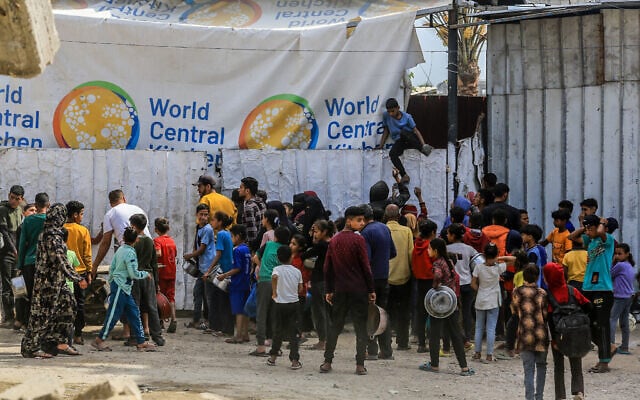
Netanyahu also briefed the committee on Israel’s plan to soon resume the distribution of aid in Gaza through a new system that aims to prevent assistance from being diverted by Hamas.
Netanyahu said that those who pick up aid from newly established distribution hubs in southern Gaza will be barred from returning to places in Gaza outside of the new humanitarian zone being set up in southern Gaza. Israel’s aid plan envisions squeezing Gaza’s entire population of 2 million people into an area in and surrounding Rafah that makes up between 10 and 25 percent of the Strip. Those entering will be vetted by the IDF, according to officials briefed on the plan.
A new organization called the Gaza Humanitarian Foundation was established in order to manage the new aid program. GHF was supposed to announce its rollout last week but has faced major setbacks after the UAE, the UN and other international bodies refused to cooperate or fund the initiative due to concerns that it doesn’t adequately address the humanitarian crisis in Gaza, where aid has been banned by Israel since March 2.
Jacob Magid contributed to this report.
WATCH: Edan Alexander reunites with grandmother, says he saw her on TV
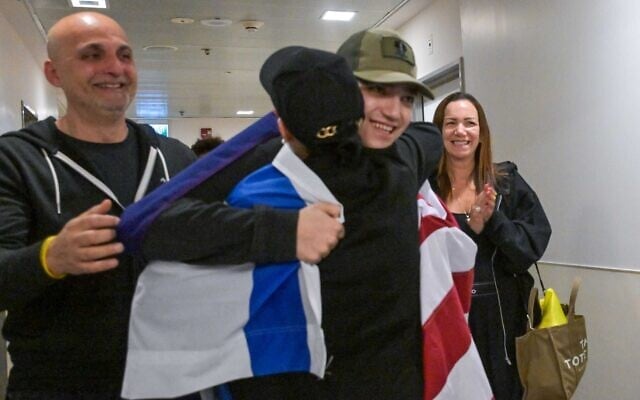
Israel’s Government Press Office releases additional footage and pictures from former American-Israeli hostage Edan Alexander reuniting with his grandmother Varda Ben Baruch and other family members at Sourasky Hospital in Tel Aviv.
Alexander can be heard telling Ben Baruch that he saw her on the news. It is not immediately clear if he meant that he saw her while he was in captivity or since his release earlier today.
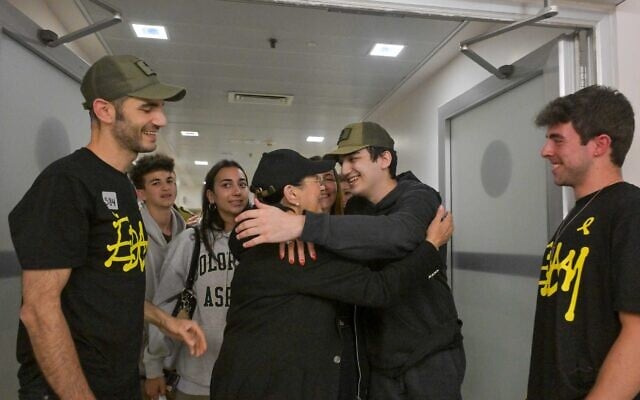
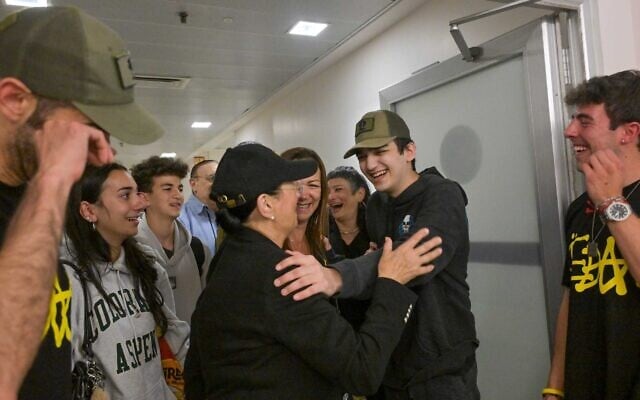
Syria’s Sharaa skips Iraq summit after firestorm over invitation to Gaza-focused gathering
Syrian President Ahmed al-Sharaa will not attend the Arab League Summit in Baghdad this weekend, Syrian state media says, after Iraq’s invitation spurred controversy over the rebel-turned-leader’s potential return to a country where he fought and was jailed.
Syria’s delegation to Saturday’s summit will be headed by Foreign Minister Asaad al-Shibani, state-owned Ekhbariya TV reports, without providing a reason for Sharaa’s absence. The summit is expected to focus on Gaza reconstruction and the Palestinian issue.
Sharaa’s decision highlights Syria’s mixed results establishing ties across the region after former President Bashar al-Assad’s ouster last year. Sharaa has made rapid inroads with Sunni-majority Gulf Arab states Saudi Arabia and Qatar, but has tread more carefully with others where Iran has had strong influence, like Shi’ite-majority Iraq.
Sharaa fought with Al Qaeda in Iraq after the U.S-led invasion in 2003. He was imprisoned there for more than five years, then released for lack of evidence in 2011, according to a senior Iraqi security official.
He then opened Al Qaeda’s branch in Syria, breaking away in 2016 to form what became Hayat Tahrir al-Sham, the group that ousted Assad.
Iraq’s prime minister invited Sharaa last month to the summit, prompting criticism from mainly Shi’ite Muslim factions who accuse Sharaa of orchestrating attacks against Shi’ites during his years in Iraq.
US military replaces B-2 bombers that were sent amid Middle East tensions
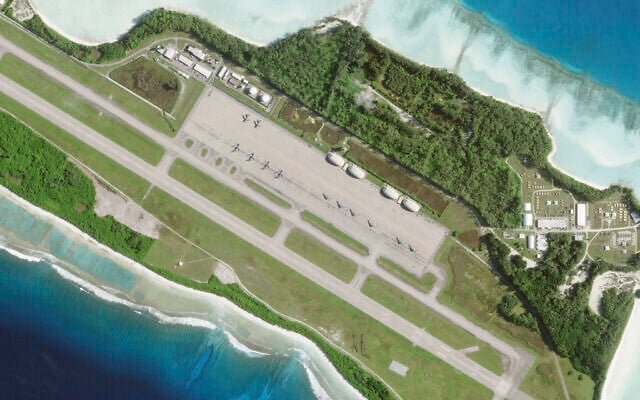
The US military is replacing its B-2 bombers with another type of bomber at a base in the Indo-Pacific that was seen as being in an ideal location to operate in the Middle East, US officials tell Reuters.
The Pentagon deployed as many as six B-2 bombers in March to a US-British military base on the Indian Ocean island of Diego Garcia, amid a US bombing campaign in Yemen and mounting tensions with Iran.
Experts say that this had put the B-2s, which have stealth technology and are equipped to carry the heaviest US bombs and nuclear weapons, in a position to operate in the Middle East.
The officials, speaking on the condition of anonymity, say the B-2 bombers were being replaced by B-52 bombers.
The Pentagon says it does not comment on force posture adjustments as a matter of policy.
Fresh talks between Iranian and US negotiators to resolve disputes over Tehran’s nuclear program ended in Oman on Sunday, with further negotiations planned.
The fourth round of talks took place ahead of President Donald Trump’s planned visit to the Middle East. Trump, who has threatened military action against Iran if diplomacy fails, has restored a “maximum pressure” campaign on Tehran since returning to the White House in January.
Tehran is willing to negotiate some curbs on its nuclear work in return for the lifting of sanctions, according to Iranian officials, but ending its enrichment program or surrendering its enriched uranium stockpile are among what the officials have called “Iran’s red lines that could not be compromised” in the talks.
Additionally, Trump announced last week that a deal had been reached to stop bombing Yemen’s Houthi group. The B-2 bombers had been used to carry out strikes against the Iran-backed group.
